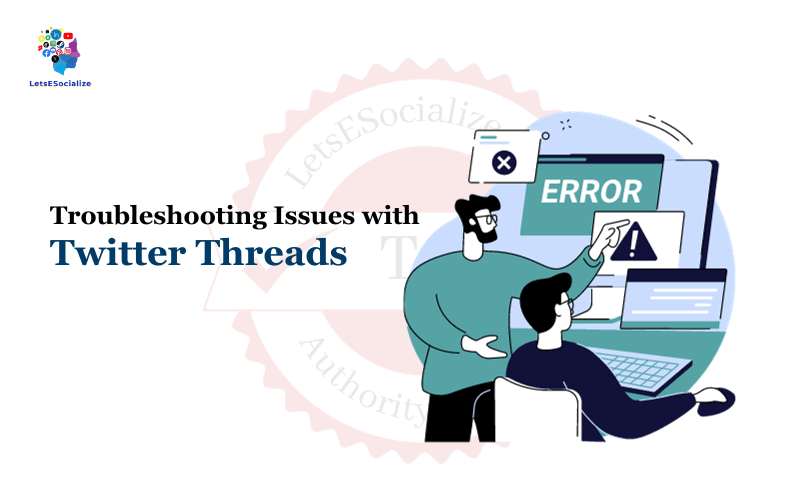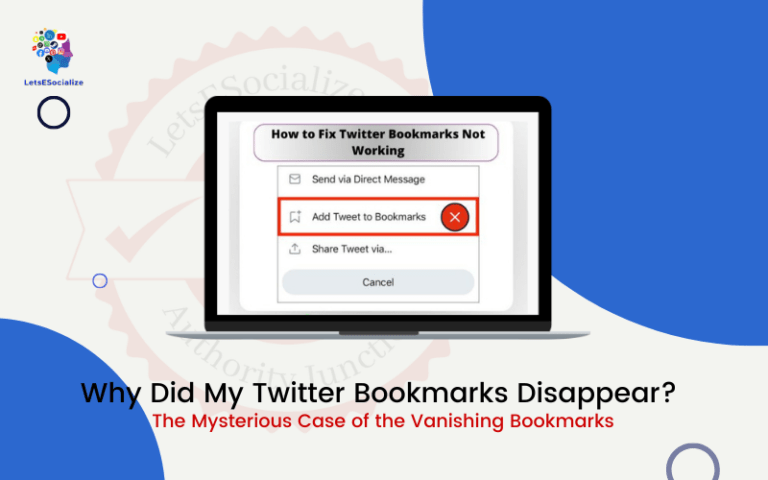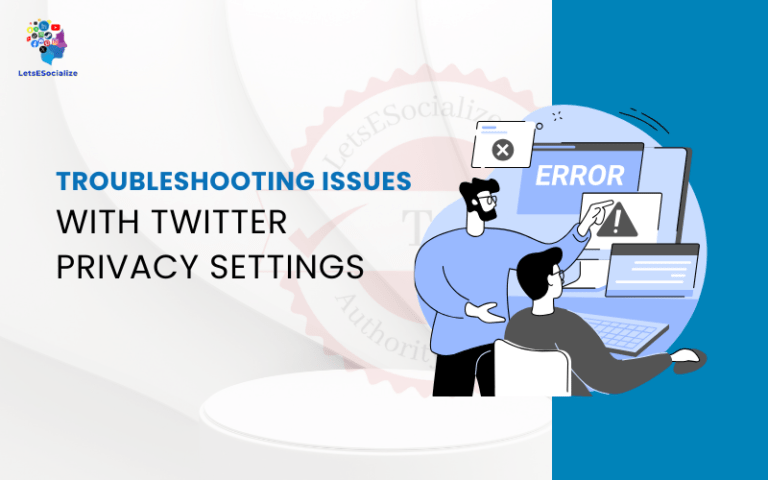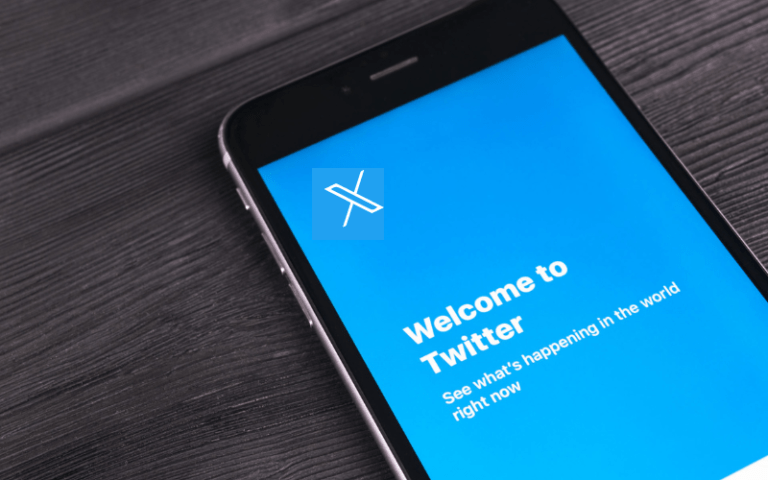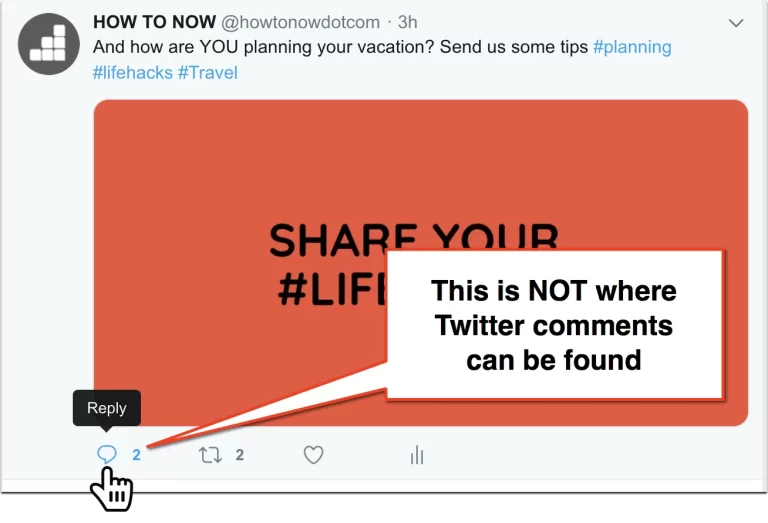Twitter threads have become a popular way for users to share longer stories and connect ideas by linking multiple tweets together. However, crafting and sharing threads can sometimes run into issues.
In this comprehensive guide, we’ll explore the most common Troubleshooting Issues with Twitter Threads and provide fixes to help you troubleshoot any issues.
Table of Contents
What is a Twitter Thread?
Before diving into troubleshooting, let’s quickly recap what exactly a Twitter thread is:
- A thread is a series of connected Tweets posted by one user.
- Each tweet in the thread adds to a central narrative, story, or idea.
- Threads allow users to tweet text, images, videos, gifs, and other multimedia across multiple tweets instead of being limited to 280 characters per tweet.
- The tweets are connected in a timeline under the original tweet.
- This creates an unbroken series that followers can read seamlessly as a cohesive piece of content.
Threads can be short little anecdotes or extensive, in-depth stories spanning dozens of tweets. Mastering them allows sharing all sorts of content that goes beyond a single tweet’s limits.
Let’s explore some hurdles that may pop up when attempting to create and share threads yourself. We’ll also provide suggested fixes to overcome each issue.
Also read: A Beginner’s Guide to Understanding Twitter Threads
Troubleshooting Thread Creation Issues
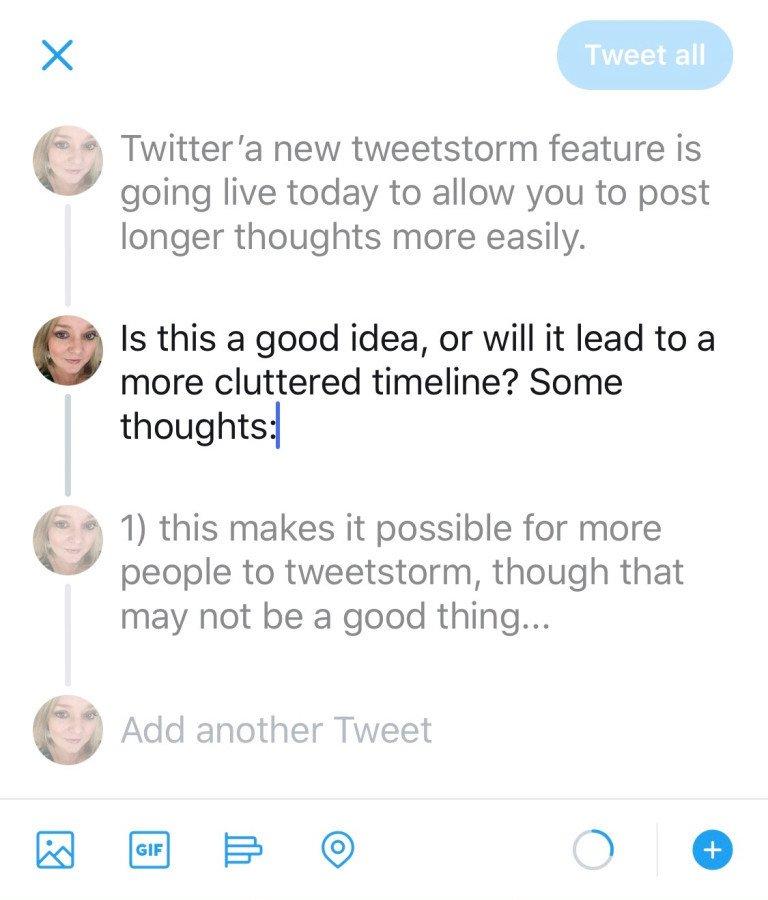
These issues can arise when first trying to string multiple tweets together into a connected thread. Let’s identify ways to troubleshoot problems at the creation stage.
Threads Aren’t Linking Properly
Issue: You posted multiple tweets in a row, but they don’t appear connected as a thread. Each tweet is displayed individually instead of grouped.
Fix: Double-check that you are replying to your original tweet rather than tweeting normally each time. To create a thread, you must reply to your starting tweet through the reply function. Responding to your tweet links it into the thread sequence. Just tweeting regularly will not thread the tweets together.
Losing the Initial Tweet
Issue: You can’t find the very first tweet that began your thread. Scrolling up your timeline only goes so far.
Fix: Use Twitter’s search bar to search your exact text from the original tweet. This should surface the initial tweet that anchors your thread. Favoriting or retweeting this tweet will also make it easier to find later.
Character Limits Disrupting Flow
Issue: You’re trying to create a cohesive thread narrative, but keep hitting the 280-character limit that breaks up the flow.
Fix: Get creative with how to divide the text across multiple tweets to maintain logical flow. You may need to tweak the wording to conclude one thought and begin the next. Using images and media can also reduce the required text per tweet while still advancing the narrative.
Can’t Tweet Images in Thread
Issue: Your thread relies on images to support the story, but Twitter won’t let you include pictures in the threaded replies.
Fix: You can only include images/media in the starting tweet anchoring a thread. For subsequent replies, you’ll need to upload the images to a hosting site and then insert the links. Popular picture hosts like Imgur make this easy to do on the fly.
Threads Out of Order
Issue: The tweets in your thread display out of chronological sequence, confusing the timeline.
Fix: Unfortunately, threads can sometimes get out of order, especially longer threads. Double-check that you are always directly replying to the last tweet in the sequence. Numbering your tweets can also indicate proper order.
Lost in Long Threads
Issue: After lots of back-and-forth replies, you needed to track where the actual thread narrative left off.
Fix: Using line breaks, punctuation, and language signifying transitions clearly between different sub-points can help orient readers. Summarizing throughout long threads also aids comprehension.
Can’t Thread Retweets
Issue: You want to add your commentary to somebody else’s viral tweet in thread form but need help to connect your retweet into a thread.
Fix: Twitter doesn’t allow users to thread off of retweets, only original tweets. To comment on a retweet in thread form, quote the tweet rather than directly retweet. Your quote tweet allows you to begin threading your related tweets.
Troubleshooting Issues Sharing Threads
Once your thread is created, you may run into snags actually sharing it widely. Here are some fixes for common issues propagating threads:
Difficulty Locating Tweet
Issue: You need help finding the main tweet to share or link to the complete thread sequence easily.
Fix: Favoriting the initiating tweet makes it easy to locate under your “Likes” tab. Using a unique hashtag in the starter tweet also makes it easier to search and resurface later.
Broken Thread Links
Issue: You want to link to your thread, but the URL only links to an individual tweet from the sequence rather than the whole thread.
Fix: Make sure to use the URL from the first tweet that began the thread. Twitter’s systems will automatically unfold the full thread from that originating tweet’s link.
Gaining Visibility
Issue: You shared your thread, but it’s getting lost in the noise without much engagement.
Fix: Leverage hashtags strategically to reach more users who may be interested in the topic. Ask prominent accounts related to the content to check out and help amplify your thread. Share snippets of the thread natively into other platforms like Instagram Stories.
Overwhelmed by Volume
Issue: After your thread goes viral, you’re overwhelmed trying to read or respond to massive volumes of replies and quotes.
Fix: Curate and reply to the most meaningful comments when possible. For lighter engagement, utilize likes. Turn off notifications if needed. Enlist help from a social media manager if feasible.
Losing Context in Excerpts
Issue: People are sharing only small portions of your thread, losing the necessary context from the full narrative.
Fix: Multi-tweet quote sharing helps keep more context. On very viral threads, summarizing in the starter tweet enables understanding excerpts. Ask folks to link to the full thread.
Difficulty Following Conversations
Issue: When lots of other users are replying to or quoting your thread tweets, following the overall conversation becomes difficult.
Fix: On the desktop, switch to the “Latest Tweets” view to see all related tweets chronologically rather than in branching replies. On mobile, use the “View Conversation” option. Lists and Moments can also collect relevant tweets.
Blocked From Sharing
Issue: Twitter won’t let you share your thread, claiming you are blocked from sending tweets.
Fix: You may have hit a temporary sharing limit, especially on longer threads. Wait a bit before trying to share again. Check account restrictions, too. Authenticating as a human via a captcha could lift any bot blocking.
Troubleshooting Thread Formatting
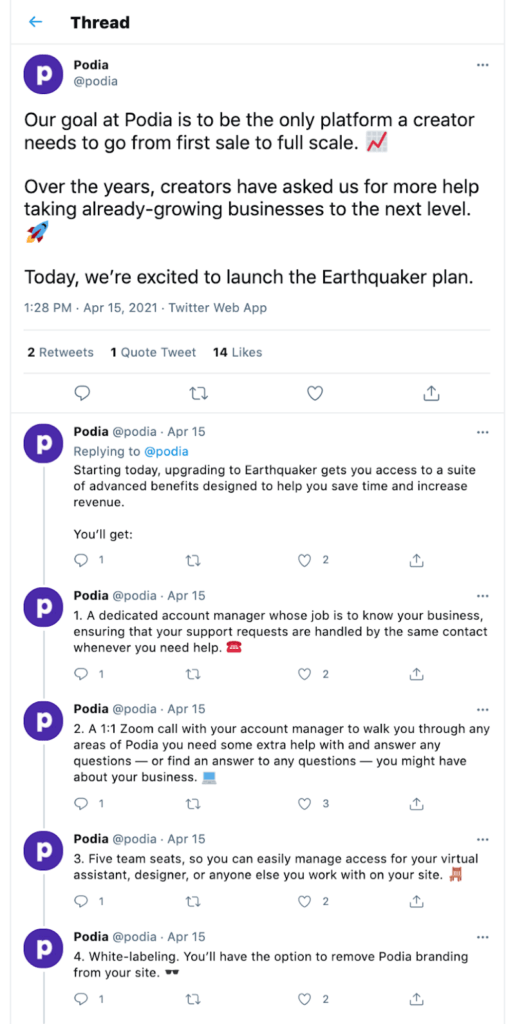
Proper visual formatting is also key for weaving tweets into coherent narratives. Here are tips to fix formatting problems:
Jumbled Order on Mobile
Issue: Although the tweets are posted chronologically, on mobile, they display out of order, interrupting the flow.
Fix: Unfortunately, display bugs can cause replies to show out of sequence on mobile sometimes. Using an alternate Twitter client like Tweetbot often helps.
Missing Media
Issue: Some tweets in the thread lose embedded images, videos, gifs or other media – only text shows.
Fix: Try re-embedding the media or linking to it. Twitter’s systems can occasionally glitch and drop media. Check for copyright issues, too.
Broken Profile Linking
Issue: You mentioned other users’ handles in the thread, but the tweets failed to link the profiles.
Fix: Make sure the handles are formatted correctly with @ preceding them. User mentions can fail when handles are misspelled, so check carefully.
Formatting Disappears
Issue: Text formatting like italics, bold, underline, and bullet points disappears in the threaded tweets.
Fix: Unfortunately, Twitter tends to strip formatting when threading replies. Consider using punctuation, line breaks, and symbols to simulate formatting.
Links Aren’t Clickable
Issue: You included links in your tweets, but they display as plain text rather than clickable links.
Fix: Avoid editing the tweet after posting. Edits sometimes cause links to revert to text. Refrain from nesting links in another markup. Re-share the tweet to reset.
Hashtag Grouping Stops
Issue: You used consistent hashtags across your thread, but at some point, the tweets stopped grouping under them.
Fix: Double-check hashtag spelling – inconsistencies will split threads. Also, beware of exceeding the limit Twitter allows for grouping under a single hashtag.
Troubleshooting Twitter Restrictions on Threads
In some cases, limitations imposed by Twitter itself can also cause issues for threads:
Exceeding Tweet Limit
Issue: You hit the maximum number of tweets allowed per thread but still have more narrative to share.
Fix: Unfortunately, threads are capped at 25 tweets by Twitter. To add more, you’ll need to start a new sequence by linking from the end of the first thread into a second thread.
Restricted Tweeting Ability
Issue: Twitter has imposed restrictions on your account that limit how often you can tweet or engage – impeding threading.
Fix: Carefully review and abide by Twitter’s policies to avoid behaviors that trigger restrictions. If limits seem erroneous, filing an appeal with Twitter support may help remove them.
Threads Unrolling Themselves
Issue: Rather than remaining threaded, your tweets keep separating into individual standalone tweets.
Fix: There can be issues where Twitter’s systems fail to properly group threads. Try deleting and reposting the thread. If the issue persists, report it as a technical bug.
Can’t Thread Retweets
Issue: You want to add your commentary to somebody else’s viral tweet in thread form but can’t seem to connect your retweet into a thread.
Fix: Twitter doesn’t allow users to thread off of retweets, only original tweets. To comment on a retweet in thread form, quote the tweet rather than directly retweet. Your quote tweet allows you to begin threading your related tweets.
Tools to Aid Threading
In addition to troubleshooting, using the right tools can help avoid issues when threading and optimize the process:
Thread Readers
Sites like Thread Reader App, Thread Unroller, etc., can transform Twitter threads into more article-like formats for improved readability. Useful for both reading and sharing threads.
Thread Managers
Apps like Threader, Thread Helper, etc., provide interfaces for drafting and publishing threads – giving more control than Twitter’s default composer.
Media Hosts
Imgur, Giphy, YouTube and other hosts allow easy embedding of images, GIFs and videos into tweet threads for more multimedia and dynamic storytelling.
Tweet Deleters
Manage large threads by using TweetDeleter, etc., to mass delete tweets if needed for corrections rather than manually.
Analytics
Twitter Analytics, Tweetstats and other analytics tools provide data on thread engagement and reach to optimize future threads.
Longform Platforms
Consider using more long-form-focused platforms like Medium or Substack to publish in-depth thread narratives that don’t fit Twitter’s constraints.
Key Takeaways
Mastering the art of troubleshooting issues with Twitter threads takes practice but is crucial for storytelling. Keep these tips in mind:
- Always reply to the last tweet when adding to a thread sequence.
- Numbering tweets can aid coherence in long threads.
- Utilize images and multimedia through linking to avoid character limits.
- Link from a thread’s beginning tweet to easily share the full sequence.
- Promote threads via hashtags, retweets from prominent accounts, etc., to gain Visibility.
- Curate interactions carefully when threads go mega-viral.
- Test that links, media and formatting are displaying properly.
- Follow Twitter’s policies closely to avoid restrictions on tweeting/engaging.
- Leverage tools like Thread Reader, Tweet Deleter, etc. to optimize threading.
With the right troubleshooting knowledge, you can avoid common pitfalls and create engaging threads that tell impactful stories on Twitter. Let us know in the replies if you have any other thread issues in need of troubleshooting!

